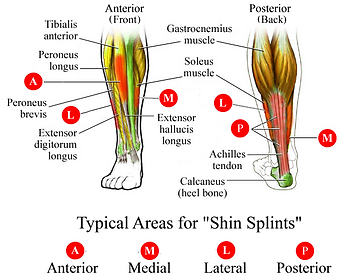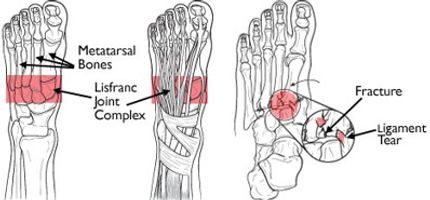An ankle sprain occurs when the ankle ligaments are overstretched. Ankle sprains vary in their severity, from mild through to severe complete ligament ruptures, avulsion fractures or broken bones.
At the time of the injury, you may hear a popping or cracking sound and will notice swelling, bruising and ankle pain. Lateral or medial ligament sprains are usually acutely tender over the injured ligament.

Shin splints or Tibial Stress Syndrome, is an overuse injury or repetitive stress injury of the shin.
Various stress reactions of the tibia (bone) and surrounding musculature occur when the body is unable to heal sufficiently in response to repetitive muscle and bone strain.
Medial shin pain (inside of the leg) is usually caused by tension in the calf which can stem from issues such as arch support, overuse and pronation.
Lateral shin pain (outside of the leg) is usually caused by tension in the tibialis anterior muscle which can stem from gait or muscular/mechanical issues.

A Morton’s neuroma is a swollen and inflammed nerve in the foot. It is caused by compression of the nerve just below the base of the toes. The symptoms of a mortons neuroma include a “burning” sharp pain and numbness on the bottom of the foot which can radiate in to the toes. The pain is usually increased by walking or when the ball of the foot is squeezed together.

Lisfranc injuries are when the ligaments that support the midfoot are torn and/or bones in the midfoot are broken. Lisfranc injuries present with bruising on the top and bottom of the foot. The foot becomes swollen and painful with pain that is increased by standing and walking.

Plantar Fasciitis, or now more accurately called Plantar Fasciopathy, involves pain and structural changes to the fascia at the bottom of the foot. Thickening and degenerative changes have been shown to be apparent in people with this condition.
Painful heels in the morning or at rest are a common sign of this condition. Sometimes, people may experience pain at the beginning of an activity (such as running) that seems to diminish as they continue with the activity.
If left untreated, an increase in pain and a reduction in function can occur. Furthermore, a heel spur (a bony spur/growth) can develop on the heel as the bodies response to the condition.
